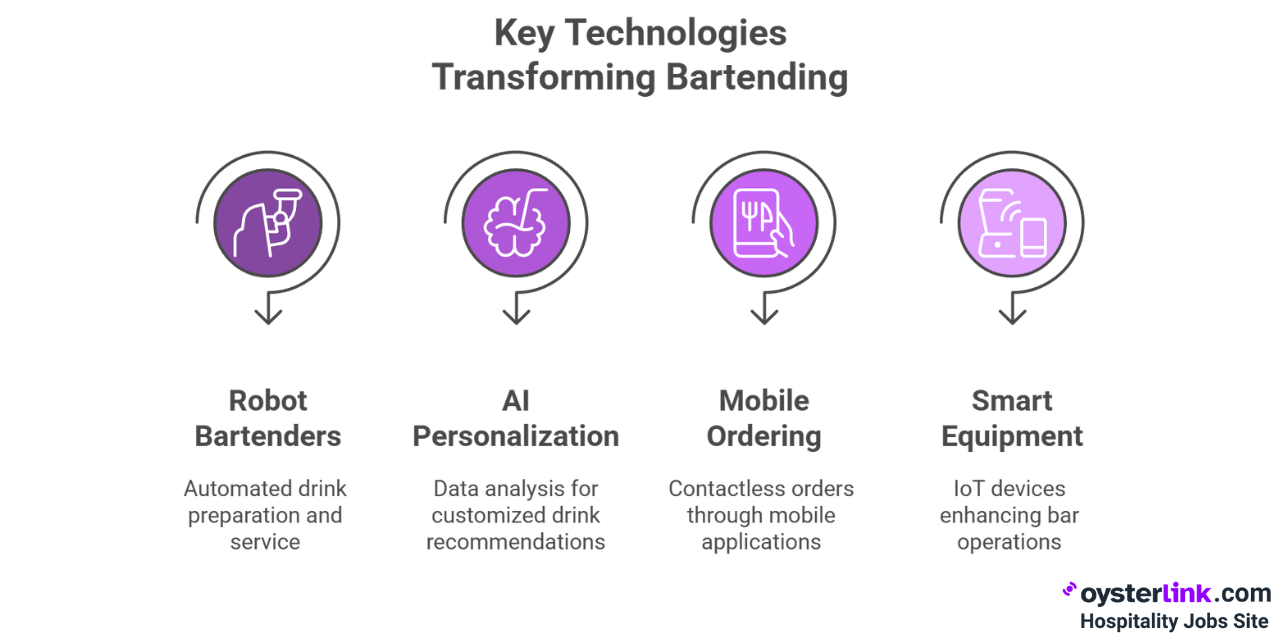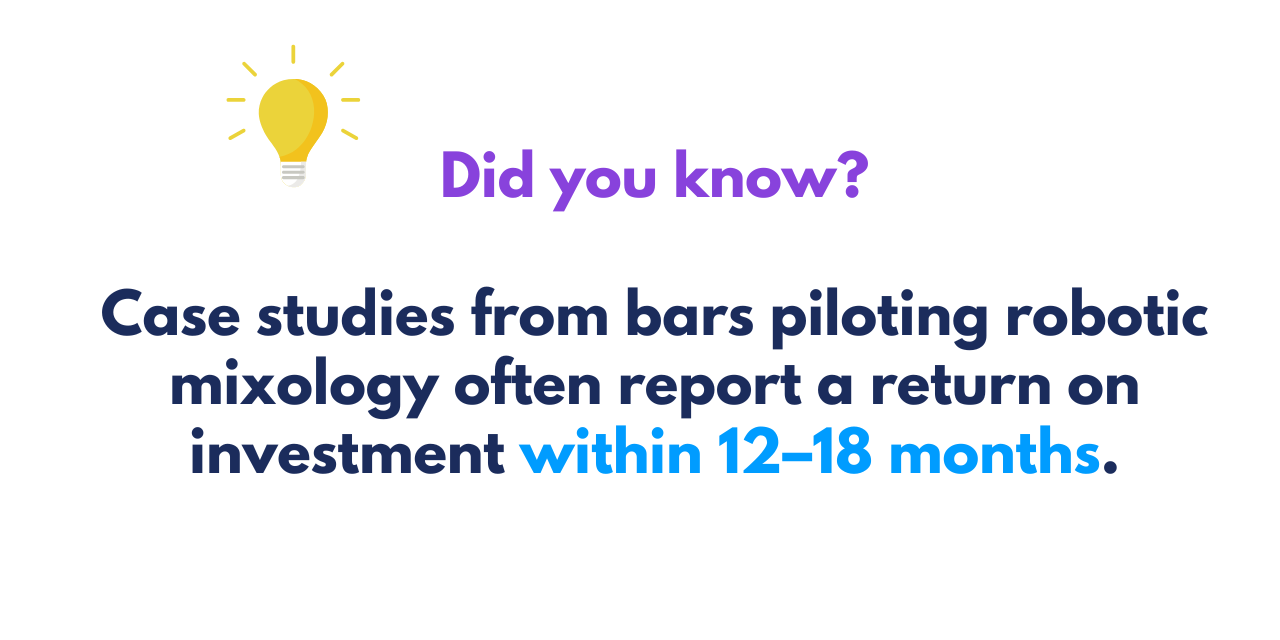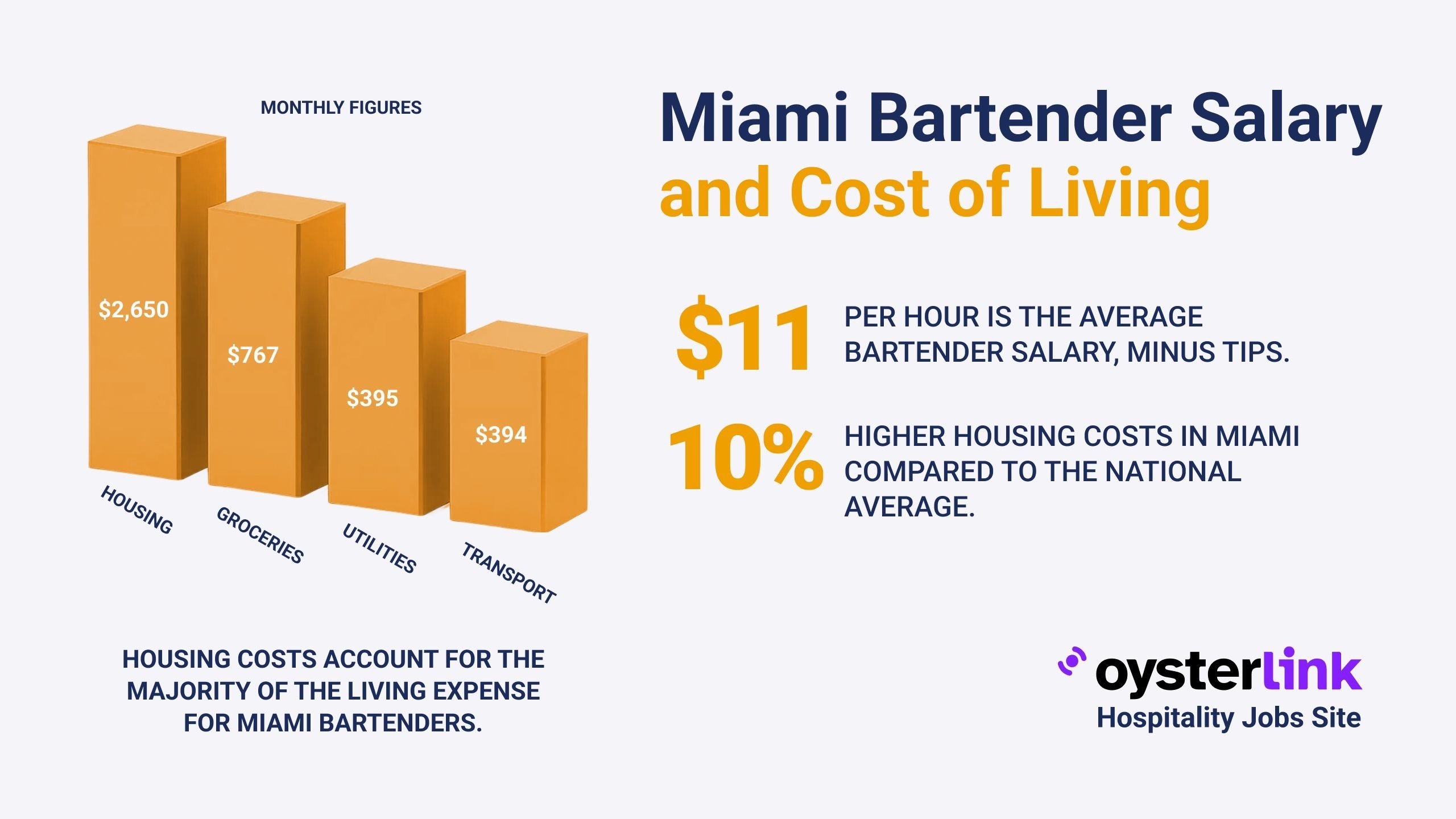Future of Bartending Technology: Key Takeaways
- Robot Bartenders like Makr Shakr and Cecilia.ai can increase the speed of service, cut labor costs and improve consistency — helping many operators enhance their peak service periods.
- AI tools such as Nectar and PREDICTIV help deliver personalized guest recommendations and smarter inventory forecasting, reducing waste and helping control costs.
- Studies show that using contactless payments increases customer satisfaction, mainly because they are fast, convenient and secure.
- The Bartender’s role is shifting to embrace creativity, hospitality and tech oversight.
Long waits, drink mix-ups and inconsistent cocktails have always frustrated both bar owners and customers. However, rapid advances in technology are beginning to change that, often in unexpected ways.
Technology is fundamentally reshaping bartending — automating complex tasks, personalizing guest experiences and making bar operations more efficient all at once. Here, you'll learn which innovations are driving the biggest changes in hospitality, how Bartenders and guests are affected and what the next decade could hold for bars looking to get ahead.
Overview: How Technology Is Shaping the Future of Bartending
The bar industry has always been about evolving, but now, digital transformation is speeding things up even more. From smarter ways to take orders to AI-powered drink recommendations, Bartenders and bar owners are discovering new methods to deliver quality quickly and efficiently.
Technology isn’t just a passing trend — it’s becoming a must-have for any bar looking to meet rising customer expectations. Staying up-to-date with the latest tech and embracing it is key to standing out and thriving in today’s competitive landscape.
For owners and Managers, being open to trying new tools — even on a small scale or during specific shifts — can make a big difference. It helps tackle common issues like long lines, staffing shortages and unpredictable inventory needs.
Those who adopt these innovations early often enjoy not only smoother service but also increased loyalty from their staff. Employees appreciate management’s investment in tools that make their work easier and more effective.
Additionally, hiring skilled, tech-savvy staff can help ensure smooth implementation of new systems and deliver a better experience for your guests.
Current state of Bartending technology
Today, many bars use digital ordering systems that instantly connect Servers and Bartenders with the kitchen and drink stations. Upgraded point-of-sale (POS) systems also make payments smoother and allow real-time sales tracking.
Some bars have already started embracing automation, like self-serve beer taps or cocktail dispensing machines. Chains such as TGI Fridays and Marriott hotels have tested these systems to boost service speed and accuracy.
If your team faces bottlenecks during busy hours, these tools can deliver noticeable improvements — even before you go full automation.
Emerging trends and innovations
Looking ahead, artificial intelligence (AI), robotics and data-driven personalization are all set to revolutionize the customer experience. Early adopters are already experimenting with robot Bartenders and AI-powered menu recommendations to tap into these exciting opportunities.
Pilot programs in tech-forward cities use mobile ordering, advanced IoT solutions and even contactless payment platforms to create seamless social experiences. These changes hint at a future where technology and hospitality work hand in hand.
Consider starting with guest-facing tech like QR code menus or digital tipping systems. These require less investment up front and tend to get positive reactions from regulars and new guests alike.
Key Technologies Transforming Bartending
Several key technologies are driving change at both the bar and behind the scenes. From automated mixology to smart inventory management, here are the innovations making the biggest impact.

Robot Bartenders and automation
Robot Bartenders are no longer science fiction. Machines like Makr Shakr use robotic arms to mix and serve cocktails, seriously reducing wait times and ensuring precision with every pour. Automated cocktail machines, such as Cecilia.ai, add novelty and keep drinks consistent — yes, every mojito, just as ordered.
Businesses praise these robots for reducing labor costs and handling peak periods better, though some customers worry about losing the personal touch. Feedback shows that robots excel at speed and consistency but don’t replace the creative flair of a talented human Bartender.
Case studies from bars piloting robotic mixology often report a return on investment within 12–18 months, primarily driven by reduced waste and faster high-margin drink sales. Still, many owners choose semi-automation — combining machines with Bartender interaction — to balance efficiency and guest rapport.

AI and data-driven personalization
AI technology is increasingly used to create more personalized guest experiences. By analyzing customer preferences, order history, and flavor profiles, bars can recommend drinks that suit each individual, making visits more memorable and encouraging loyalty.
Beyond personalized recommendations, AI systems also help optimize inventory management and demand forecasting. They assist in reducing waste and controlling costs while ensuring that popular ingredients are always available.
Mobile and contactless ordering solutions
Mobile ordering apps and QR code menus are now standard in many venues. They let patrons order and pay from their smartphones, skipping lines and minimizing contact (nobody loves a crowded bar line).
Recent studies indicate that contactless payments boost customer satisfaction, primarily because they are quick, easy to use and secure.
Start with a mobile order-and-pay solution during busy evenings to see how it affects throughput and customer reviews. Encouraging digital tipping can also increase average tip amounts, keeping your staff motivated.
Smart bar equipment and IoT
Smart dispensers track every pour and integrate with cloud platforms to monitor inventory in real time. IoT tools let staff know when supplies run low, can automate stock reorders or flag maintenance before something breaks and throws off an entire Friday night.
Operators are already reporting lower shrinkage and less waste thanks to smart equipment. The result? A better workflow for you — and a higher level of service for customers.
Impact on Bartenders and the Customer Experience
Technology is changing what it means to be a Bartender and what patrons expect from a night out. However, technology must blend with hospitality skills to create memorable experiences that keep guests coming back.
Changing role of the Bartender
With automation handling repetitive tasks, the Bartender’s job is shifting toward hospitality, creativity and overseeing technology. Bartenders who master new tech will have the edge in crafting memorable drinks and managing guest interactions.
Training programs like those from the United States Bartenders’ Guild now include modules on digital systems, inventory tech and robotic maintenance to help Bartenders adapt to this evolving landscape.
Use new tech as a staff development opportunity — offering tech-focused shifts or incentives for Bartenders who champion digital tools. Your best team members will likely see this as an opportunity to advance, not a threat.
Enhanced customer personalization
Technology enables bars to offer loyalty programs, personalized drink menus and experiences like interactive tastings. For example, frequent guests might have a signature cocktail recommended to them when they check in via a mobile app.
Personalized bar journeys can now include digital feedback surveys, rewards for trying new products and even immersive digital displays tied to the patron’s preferences.
Potential drawbacks and challenges
Some worry that automation could diminish traditional skills or leave Bartenders out of work. Data privacy concerns also exist, along with the risk of bars relying too heavily on machines.
Balancing tech with personal service is key. Solutions like upskilling staff, protecting customer data and focusing technology on support rather than replacement can address these issues.
The Future Outlook: What’s Next for Bartending?
As technology continues to evolve, the pace of innovation is expected to increase. Over the next decade, we can anticipate new experiences, tools and roles transforming the industry.
Upcoming innovations
Augmented and virtual reality (AR/VR) could enable patrons to watch their drinks being crafted virtually or learn about spirits in immersive ways. Biotechnology might produce new sustainable ingredients and exotic flavors.
Further automation, like fully autonomous bar stations or AI-driven ambiance lighting, could redefine the overall experience and roles within hospitality.
Balancing tradition and technology
While speed and precision are valuable, many customers still crave authentic human interactions. Successful bars will blend their old-school charm with modern convenience.
Industry leaders recommend involving experienced Bartenders in tech rollouts and encouraging knowledge sharing between traditionalists and innovators. This fosters a culture of respect, trust and continuous improvement.
As you plan future hiring, review questions for managing and hiring Bartenders in the digital age — skill s like adaptability, technical competence and hospitality remain key.
 (1).webp)



.png)

.png)
.png)